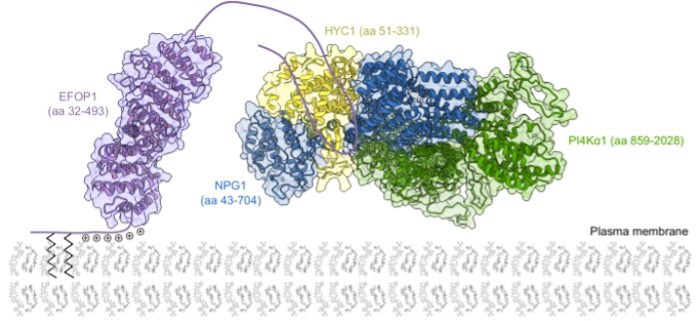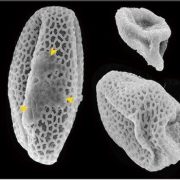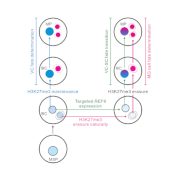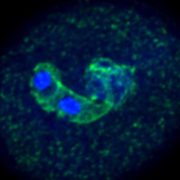PI4P production at the plasma membrane: A giant protein complex for a tiny lipid
Noack et al. provide insight into the biosynthesis of an important plasma membrane lipid.
https://doi.org/10.1093/plcell/koab135
Lise Noack and Yvon Jaillais
Laboratoire Reproduction et Développement des Plantes, Univ Lyon, ENS de Lyon, Université Claude Bernard Lyon 1, CNRS, INRAE, F-69342, Lyon, France
Background: The inside of the cell is delimited from the outside by a membrane, called the plasma membrane. Similarly, the cell is composed of compartments that are all delimited by membranes. These membranes are made up of lipids. While most of the lipids have a structural role, some display special features and act as a signal. This is the case for phosphatidyl-4-phosphate (PI4P). In Arabidopsis, PI4P is present at the plasma membrane and has the particularity to carry negative charges. Hence, the plasma membrane is the most negatively charged membrane. This characteristic has been described as essential to localize proteins involved in various cellular functions at the plasma membrane. However, very little is known about the enzyme synthesizing PI4P at the plasma membrane.
Question: How is PI4P produced at the plasma membrane?
Findings: In Arabidopsis, three enzymes can produce PI4P: PI4Kalpha1, PI4Kbeta1 and PI4Kbeta2. While PI4Kbeta1 and PI4Kbeta2 are present in intracellular compartments, we found that PI4Kalpha1 is located at the plasma membrane. In addition, we show that this enzyme is part of a protein complex composed of three other subunits: NO-POLLEN-GEMRINATION (NPG), HYCCIN-CONTAINING (HYC) and EFR3-OF-PLANTS (EFOP). While NPG acts as a scaffold around which HYC and PI4Kalpha1 associate, EFOP anchors the complex at the plasma membrane thanks to a lipid modification. Interestingly, the complex localizes in very stable nanodomains at the plasma membrane. In addition, we found that this protein complex is required for cell survival and is essential for pollen, embryonic and post-embryonic development, which highlights the importance of PI4P at the plasma membrane.
Next steps: The next step is now to unravel how the PI4Ka1 complex localization in nanodomains is established and maintained and what are the functional implications of having such a precise spatiotemporal localization at the plasma membrane.
Noack LC, Bayle V, Armengot L, Rozier F, Mamode-Cassim A, Stevens FD, Caillaud MC, Munnik T, Mongrand S, Pleskot R, Jaillais Y. (2021). A nanodomain-anchored scaffolding complex is required for the function and localization of phosphatidylinositol 4-kinase alpha in plants. https://doi.org/10.1093/plcell/koab135








